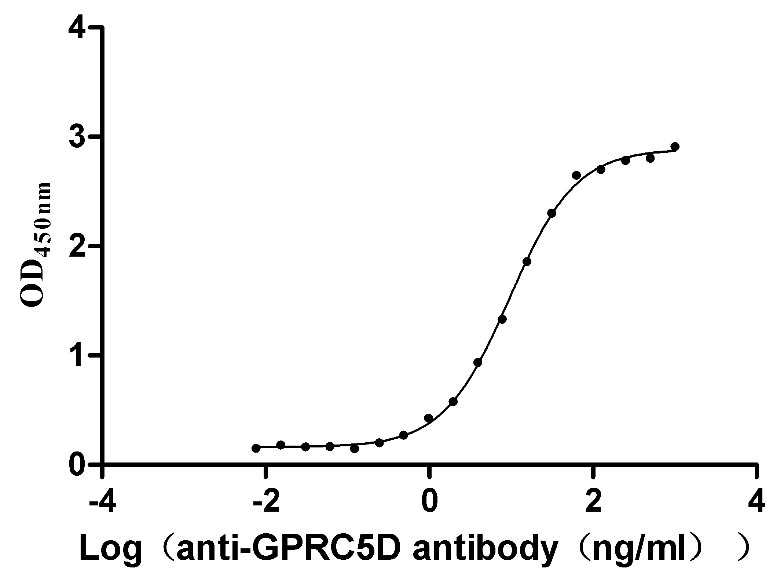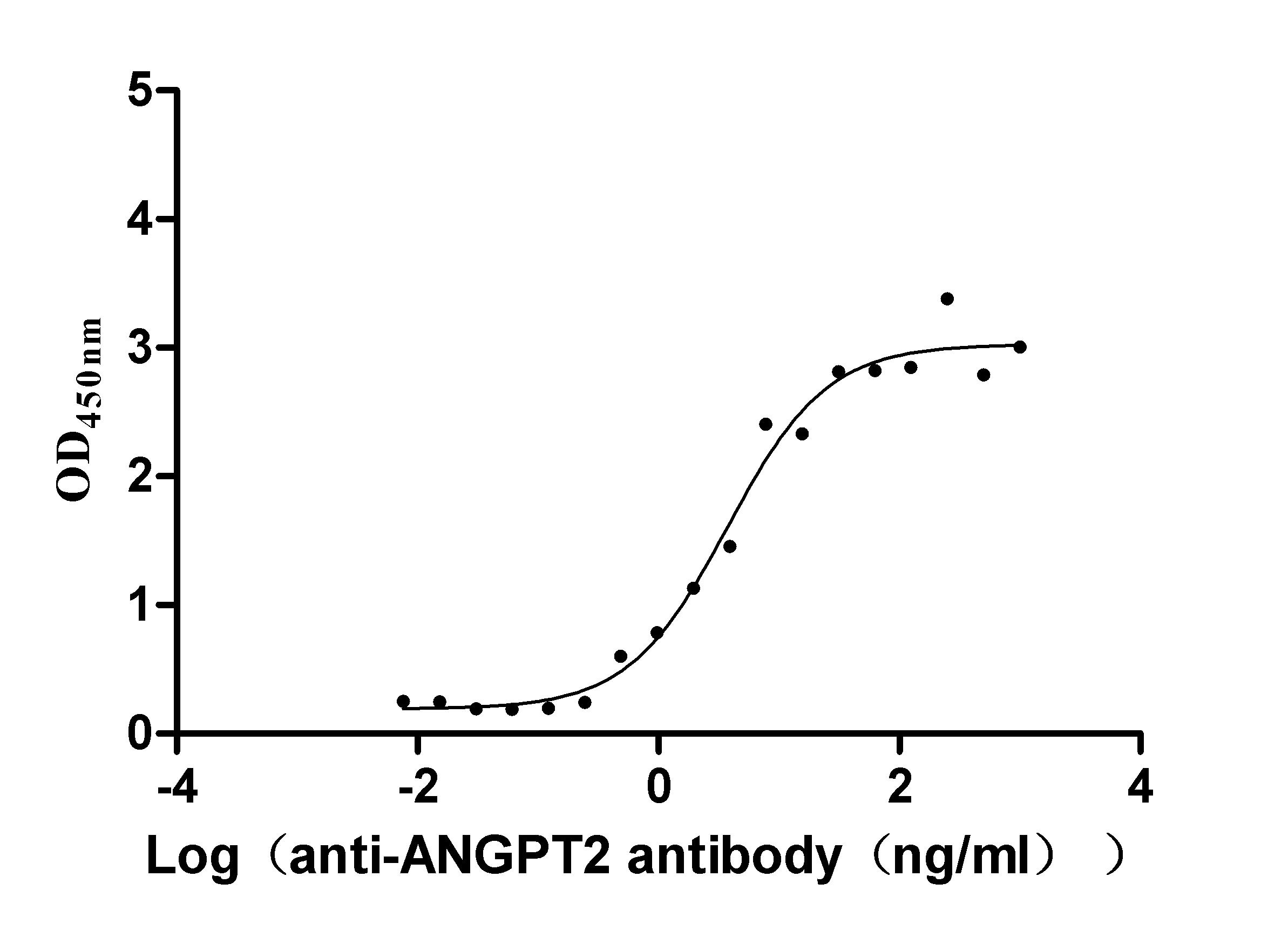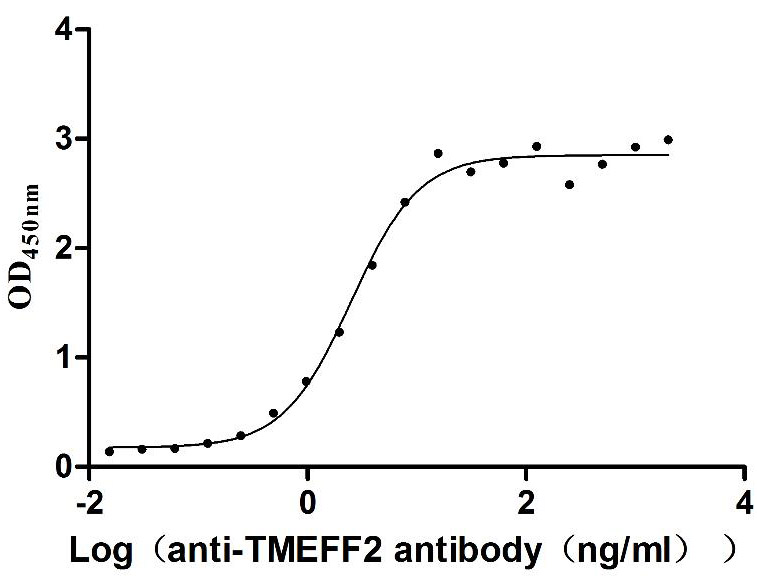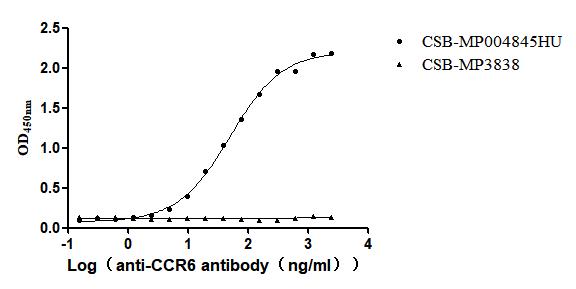Recombinant Mouse Dimethylaniline monooxygenase [N-oxide-forming] 5 (Fmo5)
-
中文名稱:小鼠Fmo5重組蛋白
-
貨號:008751MO
-
規(guī)格:
-
其他:
產(chǎn)品詳情
-
Uniprot No.:
-
基因名:Fmo5
-
別名:Fmo5Dimethylaniline monooxygenase [N-oxide-forming] 5; EC 1.14.13.8; Dimethylaniline oxidase 5; Hepatic flavin-containing monooxygenase 5; FMO 5
-
免疫原種屬:Mus musculus (Mouse)
-
濃度:It differs from different batches. Please contact us to confirm it.
-
保存緩沖液:Lyophilized from Tris/PBS-based buffer, 6% Trehalose, pH 8.0
-
應(yīng)用說明:Repeated freezing and thawing is not recommended. Store working aliquots at 4°C for up to one week.
-
儲存條件:The shelf life is related to many factors, storage state, buffer ingredients, storage temperature and the stability of the protein itself.
Generally, the shelf life of liquid form is 6 months at -20°C/-80°C. The shelf life of lyophilized form is 12 months at -20°C/-80°C. -
貨期:Basically, we can dispatch the products out in 1-3 working days after receiving your orders. Delivery time maybe differs from different purchasing way or location, please kindly consult your local distributors for specific delivery time.
-
用途:For Research Use Only. Not for use in diagnostic or therapeutic procedures.
靶點詳情
-
功能:Acts as Baeyer-Villiger monooxygenase on a broad range of substrates. Catalyzes the insertion of an oxygen atom into a carbon-carbon bond adjacent to a carbonyl, which converts ketones to esters. Active on diverse carbonyl compounds, whereas soft nucleophiles are mostly non- or poorly reactive. In contrast with other forms of FMO it is non- or poorly active on 'classical' substrates such as drugs, pesticides, and dietary components containing soft nucleophilic heteroatoms. Able to oxidize drug molecules bearing a carbonyl group on an aliphatic chain, such as nabumetone and pentoxifylline. Also, in the absence of substrates, shows slow but yet significant NADPH oxidase activity. Acts as a positive modulator of cholesterol biosynthesis as well as glucose homeostasis, promoting metabolic aging via pleiotropic effects.
-
基因功能參考文獻:
- Fmo5(-)(/)(-) mice have metabolic characteristics similar to those of germ-free mice, indicating that FMO5 plays a role in sensing or responding to gut bacteria. In WT mice, FMO5 is present in the mucosal epithelium of the gastrointestinal tract where it is induced in response to a high-fat diet. PMID: 28646079
- The phenotype of a knockout mouse identifies FMO5 as a regulator of metabolic aging. PMID: 26049045
- The functional activity of Fmo5 was determined. PMID: 17721934
-
亞細胞定位:Microsome membrane. Endoplasmic reticulum membrane.
-
蛋白家族:FMO family
-
組織特異性:Expressed in liver (at protein level). Expressed in the mucosal epithelium of the gastrointestinal tract.
-
數(shù)據(jù)庫鏈接:
Most popular with customers
-
Recombinant Human T-cell surface protein tactile (CD96), partial (Active)
Express system: Mammalian cell
Species: Homo sapiens (Human)
-
Recombinant Human G-protein coupled receptor family C group 5 member D (GPRC5D)-VLPs (Active)
Express system: Mammalian cell
Species: Homo sapiens (Human)
-
Recombinant Dog Angiopoietin-2 (ANGPT2) (Active)
Express system: Mammalian cell
Species: Canis lupus familiaris (Dog) (Canis familiaris)
-
Recombinant Human Microtubule-associated protein tau (MAPT) (Active)
Express system: Mammalian cell
Species: Homo sapiens (Human)
-
Recombinant Human Tomoregulin-2 (TMEFF2), partial (Active)
Express system: Mammalian cell
Species: Homo sapiens (Human)
-
Recombinant Human C-C chemokine receptor type 6(CCR6)-VLPs (Active)
Express system: Mammalian cell
Species: Homo sapiens (Human)


-AC1.jpg)


-AC1.jpg)











